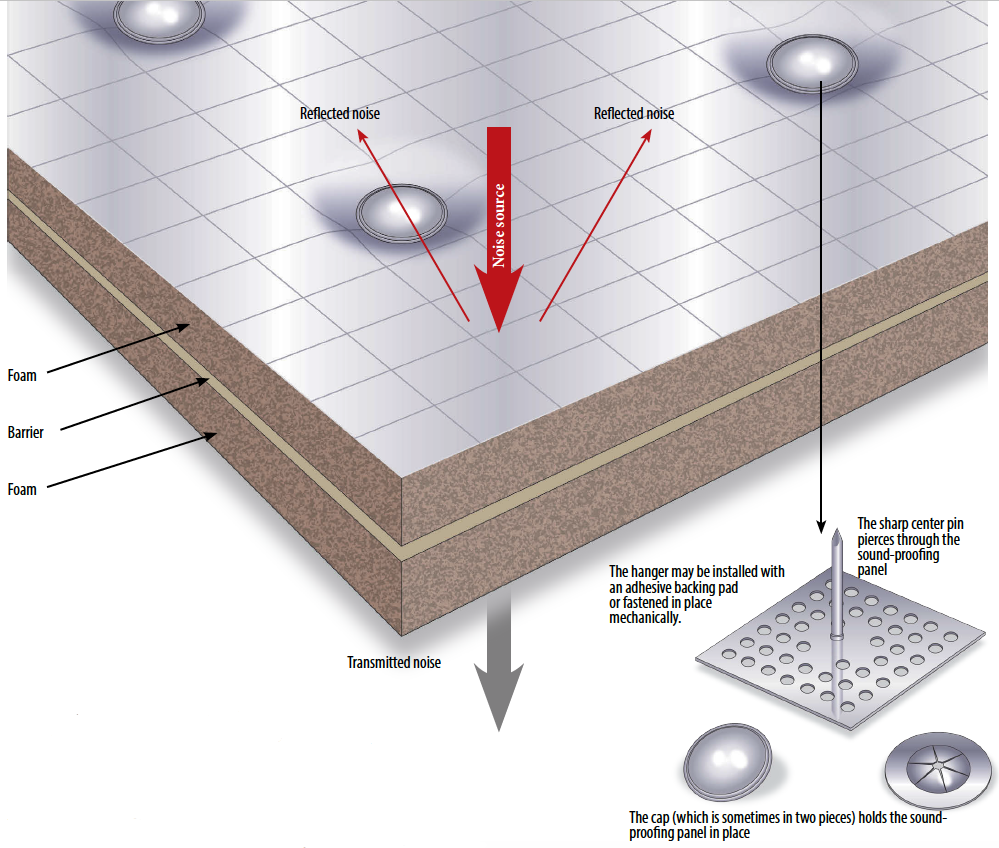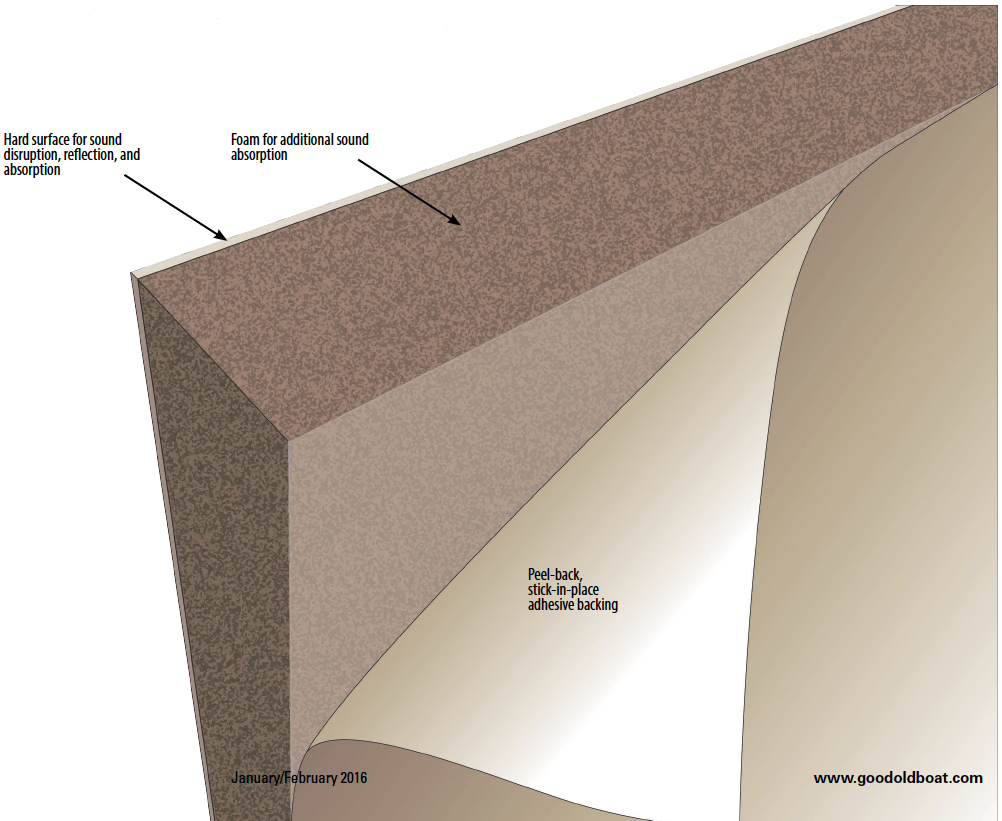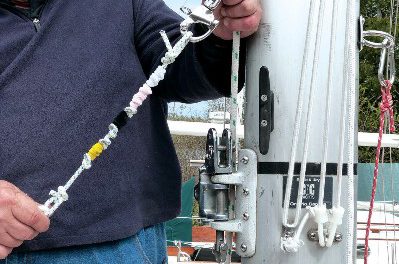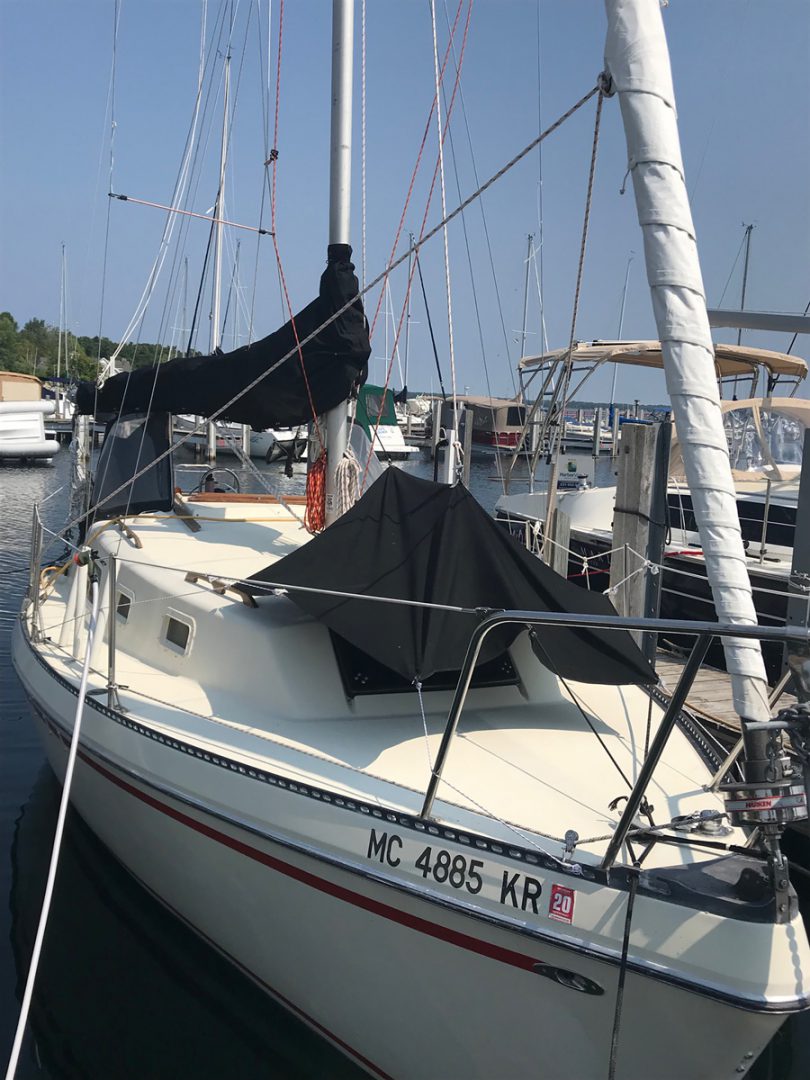 Reflection and absorption create quiet on board
Reflection and absorption create quiet on board
The iron wind is a fixture aboard most of today’s sailboats. On a typical sailboat the inboard engine lives directly beneath the floor of the cockpit, so sound-proofing the engine compartment, something that can be accomplished by the do-it-yourselfer, will dramatically reduce engine noise in the cockpit and make it a more peaceful place. Soundproofing also provides a quieter atmosphere for those using a gen-set when at anchor (as well as for other boaters sharing that anchorage). A sound barrier around the compressor of an air conditioner or refrigeration system will also reduce noise inside the cabin.

Selecting materials
Although a variety of soundproofing materials are available, many that are practical for use on shore — such as for soundproofing a recording studio — can be impractical or unsafe for use inside the engine compartment of a boat.
The typical sound-barrier material designed for engine compartments in small boats has two layers. The exposed side of the sound-barrier sandwich is a hard durable surface (usually a polymer) with a thickness of about 1⁄8 inch that disrupts engine noise, canceling some and reflecting some. Beneath this sound-reflecting surface is sound-absorbing open-cell or semi-closed-cell foam, usually 1 to 1¼ inch thick, that absorbs more noise. The combination of the hard surface and the underlying sound-absorbing foam can reduce engine noise up to 90 percent.
Sound barriers are also manufactured in multiple layers. Typically, the first layer (the visible one) is a reinforced Mylar that blocks high-frequency sounds, resists heat, and is easily cleaned. The next layer is an acoustical foam that absorbs low, middle, and high frequencies. The third layer is a dense material that blocks sound energy, and the fourth layer is a thinner acoustical foam that separates the dense layer from the mounting surface.
All of these sound-barrier materials come in many sizes, from 4- by 8-foot panels, to “tiles” pre-cut into 1-foot squares. If there are curved sections inside the engine compartment, choose a sound-barrier that’s designed to be bent. Some soundproofing panels can be formed to a radius of as little as 3 inches.
Choose the size of the sound-proofing panels to suit the engine compartment. If it has large areas of wall with a minimum of protrusions, large panels might save time. For the average engine compartment — with a complex shape and a host of cables, hoses, and other intrusions — smaller pre-cut panel tiles might be easier to install.
Prices vary depending on the manufacturer and materials used, but the do-it-yourselfer can expect prices beginning at $3.50 to $7 per square foot.
Installation
A variety of mounting systems are used for acoustical panels. Many panels come with a “peel-and-stick” backing that makes them easy to install. Other materials require the use of a special brush-on adhesive. In either case, the area on which the panel is to be mounted must be clean and free of dirt and petroleum residue. When adhesive-mounted sound panels are installed on the engine compartment’s overhead, stainless-steel screws or hanger mounts may be used as well as the adhesive for added security.
Some panel-mounting systems hold the panels in place mechanically with special hangers. These mounts are fastened to the walls of the engine compartment, 12 to 18 inches apart, with screws or adhesive pads. A sharp pin in the center of the mount penetrates all the way through the soundproofing panel, which is then secured in place with a cap (similar to those used on a tie tack or earrings).
All of these polymer/foam panels can be cut with a utility knife, heavy-duty scissors, or tinsnips. If the cut results in a fit that doesn’t mesh tightly against the adjacent panels, the void can be filled with an acoustical foam spray. Alternatively, a space that is very small and narrow, such as a slit between two adjacent panels, can be sealed with acoustical tape to maintain soundproofing integrity.
Warning
Most acoustical foams are polyurethane. All polyurethane foams, including modified polyurethane foams, will burn and, once ignited, flames spread rapidly along with intense heat, dense smoke, and toxic gases that can cause death. If soundproofing panels containing polyurethane foam are aboard your boat, it’s important to instruct everyone on board that, should there be an engine compartment fire, they should leave the cabin immediately.




